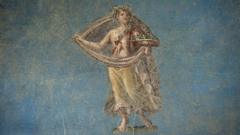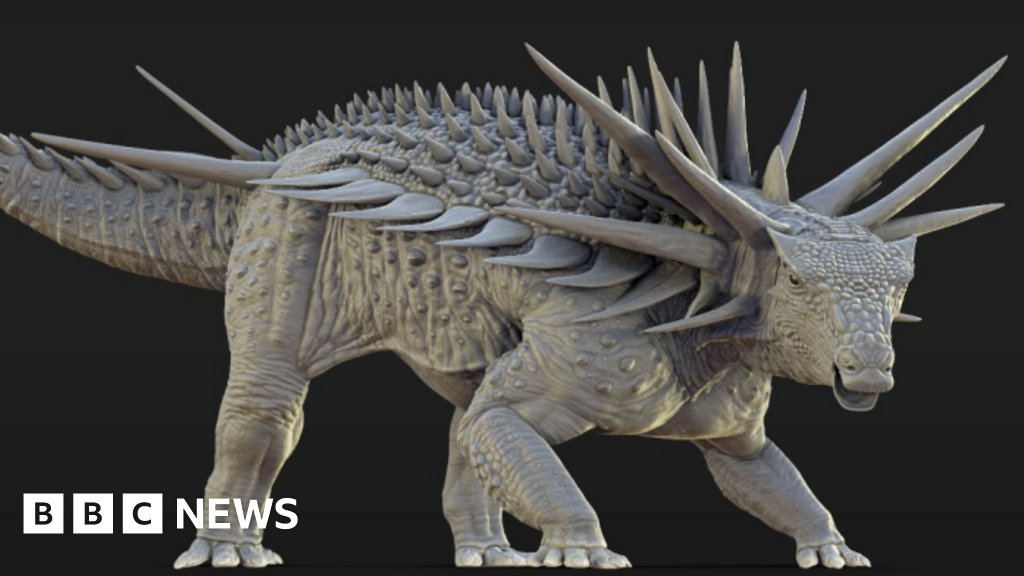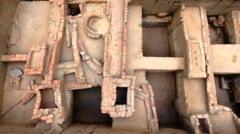The discovery of a spectacular private bathhouse, hidden for two millennia beneath volcanic ash, has astounded archaeologists working in ancient Pompeii. The bath complex is potentially the largest ever found within the city, featuring hot, warm, and cold bathing rooms that reflect the grandeur of elite Roman life.
Dr. Gabriel Zuchtriegel, director of the Archaeological Park of Pompeii, proclaimed the bathhouse as part of the "Pompeii effect," making it feel as if its inhabitants had just stepped away. The vibrant changing room boasts crimson walls and intricate mosaics, setting the scene for a luxurious bathing experience amid stunning frescoes and warm air flows.
Alongside the remarkable architecture, the skeletal remains of two individuals were found nearby, unearthing the tragic reality of Pompeii's fate after Mount Vesuvius erupted in AD 79. The remains indicate that these unfortunate souls died while trapped in a small room filled with a deadly pyroclastic flow.
Throughout the site, a range of artifacts has been discovered, including coins and jewelry that speak to the wealth of the era, alongside the stark conditions that enslaved workers endured in the bathhouse's adjoining boiler room. This contrast highlights the complex social hierarchy of ancient Rome.
As the excavation progresses, the team continues to uncover treasures that reveal both the opulence and the darker aspects of life in Pompeii, reminding us of the town’s vibrant history before its sudden destruction. The bathhouse is expected to soon become part of the public’s exploration of this ancient city.
Dr. Gabriel Zuchtriegel, director of the Archaeological Park of Pompeii, proclaimed the bathhouse as part of the "Pompeii effect," making it feel as if its inhabitants had just stepped away. The vibrant changing room boasts crimson walls and intricate mosaics, setting the scene for a luxurious bathing experience amid stunning frescoes and warm air flows.
Alongside the remarkable architecture, the skeletal remains of two individuals were found nearby, unearthing the tragic reality of Pompeii's fate after Mount Vesuvius erupted in AD 79. The remains indicate that these unfortunate souls died while trapped in a small room filled with a deadly pyroclastic flow.
Throughout the site, a range of artifacts has been discovered, including coins and jewelry that speak to the wealth of the era, alongside the stark conditions that enslaved workers endured in the bathhouse's adjoining boiler room. This contrast highlights the complex social hierarchy of ancient Rome.
As the excavation progresses, the team continues to uncover treasures that reveal both the opulence and the darker aspects of life in Pompeii, reminding us of the town’s vibrant history before its sudden destruction. The bathhouse is expected to soon become part of the public’s exploration of this ancient city.






















